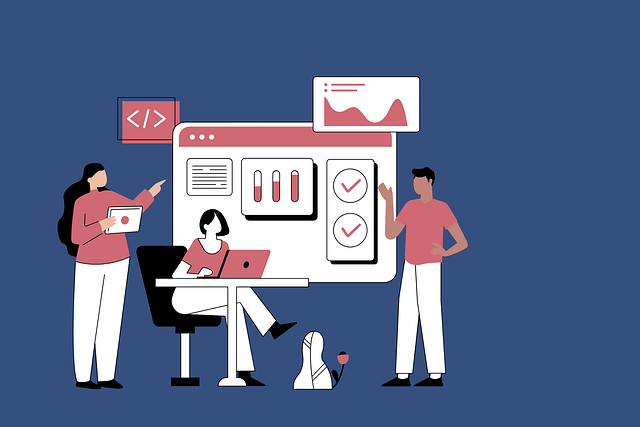Email marketing remains one of the most powerful tools for engaging your audience and driving conversions. Despite the rise of social media and other digital marketing channels, email marketing provides a direct line of communication to your audience. It’s personal, cost-effective, and can deliver impressive results when executed properly. Let’s explore some innovative ideas to enhance your email marketing strategy, boost engagement, and increase your conversion rates.
Understanding Your Audience
Segmenting Your Email List
To start, understanding your audience is key. Not all subscribers are the same, and they shouldn’t be treated as such. By segmenting your email list based on demographics, behavior, or purchase history, you can tailor your content to meet the specific needs and interests of different groups.
This personalization can significantly improve open rates and engagement.
Creating Buyer Personas
Creating detailed buyer personas helps you understand who your ideal customers are. These personas should include information such as age, gender, location, job title, interests, and pain points.
By having a clear picture of your audience, you can craft emails that resonate more effectively.
Crafting Compelling Subject Lines
The Power of Personalization
The subject line is the first thing your subscribers see, so it needs to grab their attention. Personalized subject lines that include the recipient’s name or other personal details can increase open rates.
It’s also effective to use action-oriented language and evoke curiosity to entice readers to open the email.
Testing and Refining
A/B testing different subject lines can help you determine what resonates best with your audience. Try testing variations in length, wording, and the inclusion of emojis to see what works best for your subscribers.
Designing Engaging Email Content
Focus on the Reader
When crafting your email content, always keep the reader in mind. Your emails should address their needs and interests. Start with a strong opening that captures attention and makes them want to read more.
Use clear, concise language and ensure your message is easy to understand.
Visual Appeal
Incorporate visually appealing elements such as images, videos, and infographics. These can make your emails more engaging and help convey your message more effectively.
Ensure that your emails are mobile-friendly, as a significant portion of your audience will likely read them on their phones.
Call to Action (CTA)
Every email should have a clear and compelling call to action. Whether you want the reader to visit your website, make a purchase, or download a resource, your CTA should be easy to find and enticing.
Use actionable language and create a sense of urgency to encourage immediate action.
Automating Your Email Campaigns
Drip Campaigns
Drip campaigns are a series of automated emails sent based on specific triggers or time intervals. These can nurture leads by providing valuable content and gradually guiding them toward conversion.
For example, a welcome series can introduce new subscribers to your brand and highlight key products or services.
Behavioral Triggers
Use behavioral triggers to send timely and relevant emails based on subscriber actions. For instance, if someone abandons their shopping cart, an automated reminder email can prompt them to complete their purchase.
Similarly, sending personalized recommendations based on past purchases can increase repeat sales.
Monitoring and Analyzing Performance
Key Metrics to Track
To continually improve your email marketing strategy, it’s essential to monitor key performance metrics. These include open rates, click-through rates, conversion rates, and unsubscribe rates.
Understanding these metrics can help you identify what works and what needs adjustment.
Continuous Improvement
Regularly review your email campaigns and make data-driven decisions to optimize performance. Test different elements, such as subject lines, content, and send times, to see what resonates best with your audience.
Continuously refine your strategy to achieve better results.
Building a Quality Email List

Organic Growth Strategies
The quality of your email list is crucial for effective email marketing. Instead of purchasing email lists, focus on organic growth strategies.
Encourage website visitors to subscribe to your newsletter by offering valuable incentives such as exclusive content, discounts, or free resources. Ensure that your sign-up forms are easily accessible and simple to complete.
Leveraging Social Media
Use your social media channels to promote your email list. Share snippets of your newsletter content, and provide clear calls to action for followers to subscribe.
Hosting contests or giveaways that require participants to sign up for your email list can also be an effective strategy to grow your subscriber base.
Creating Value-Driven Content
Educational Content
Providing value through your emails is key to keeping your audience engaged. Educational content, such as how-to guides, tips, and industry insights, can position you as an expert in your field and keep your subscribers looking forward to your emails.
Exclusive Offers
Reward your email subscribers with exclusive offers and promotions. This can create a sense of exclusivity and encourage loyalty. Ensure these offers are genuinely valuable and relevant to your audience’s interests.
Personalization and Customization
Dynamic Content
Use dynamic content to personalize emails for different segments of your audience. This allows you to change elements of your email based on the recipient’s preferences or behavior.
For example, you can show different product recommendations to different segments based on their past purchases.
Personalized Recommendations
Leverage data to provide personalized recommendations. If a subscriber has previously purchased a product, you can recommend similar or complementary items in future emails.
This level of personalization can significantly boost engagement and conversion rates.
Enhancing Email Deliverability
Maintaining a Clean Email List
Regularly clean your email list to remove inactive subscribers. This helps improve your deliverability rates and ensures your emails are reaching engaged recipients.
Use re-engagement campaigns to win back inactive subscribers before removing them from your list.
Authenticating Your Emails
Email authentication methods such as SPF, DKIM, and DMARC can help improve your email deliverability. These protocols verify that your emails are coming from a legitimate source, which can prevent them from being marked as spam.
Timing Your Emails
Optimal Send Times
Timing can significantly impact the success of your email campaigns. Experiment with different send times to determine when your audience is most likely to engage with your emails.
Consider factors such as time zones and typical daily routines.
Frequency of Emails
Finding the right frequency for your email campaigns is crucial. Too many emails can lead to unsubscribes, while too few can result in disengagement.
Test different frequencies and monitor your metrics to find the sweet spot for your audience.
Interactive Email Elements
Adding Interactivity
Incorporating interactive elements such as polls, quizzes, and surveys can make your emails more engaging. These elements encourage subscribers to interact with your content, increasing engagement and providing you with valuable insights into your audience.
Gamification
Gamifying your emails by adding elements such as challenges, rewards, and progress trackers can create a fun and engaging experience for your subscribers.
This can increase their likelihood of opening and interacting with your emails.
Utilizing User-Generated Content
Customer Testimonials
Featuring customer testimonials in your emails can build trust and credibility. Showcase positive feedback and success stories from your customers to highlight the value of your products or services.
Social Proof
Incorporate social proof by sharing user-generated content such as photos, reviews, and social media posts. This not only provides authentic content but also encourages other subscribers to engage with your brand.
Advanced Tactics for Email Marketing

Behavioral Segmentation
Advanced segmentation based on subscriber behavior can significantly enhance your email marketing efforts. By analyzing how subscribers interact with your emails and website, you can create highly targeted campaigns that address their specific needs and preferences.
Lifecycle Campaigns
Lifecycle campaigns are tailored to the different stages of the customer journey. From welcome emails to re-engagement campaigns, each touchpoint is designed to nurture the relationship and move the subscriber closer to conversion.
These campaigns should be automated to ensure timely delivery and consistent messaging.
Integrating Email with Other Marketing Channels
Cross-Channel Promotion
Integrate your email marketing with other channels such as social media, content marketing, and PPC campaigns. This creates a cohesive marketing strategy that reinforces your message across multiple touchpoints. For example, promote your email content on social media to drive more sign-ups and engagement.
Retargeting
Use email retargeting to re-engage visitors who have interacted with your website but haven’t converted. By sending personalized follow-up emails based on their browsing behavior, you can remind them of your products or services and encourage them to complete their purchase.
Optimizing Email Design and Layout
Mobile Optimization
With a significant number of emails being opened on mobile devices, it’s essential to optimize your email design for mobile. Ensure that your emails are responsive, with clear fonts, large buttons, and a single-column layout that’s easy to navigate on smaller screens.
Minimalistic Design
A clean, minimalistic design can improve readability and focus the subscriber’s attention on your key message and call to action. Avoid cluttering your emails with too much information or too many images.
Use whitespace effectively to create a visually appealing layout.
A/B Testing and Continuous Improvement
Testing Variables
A/B testing is crucial for understanding what works best for your audience. Test different variables such as subject lines, send times, email copy, images, and calls to action.
Analyzing the results will help you optimize your emails for better performance.
Feedback Loop
Create a feedback loop by encouraging subscribers to share their thoughts and preferences. This can be done through surveys, polls, or direct responses to your emails.
Use this feedback to continually refine and improve your email marketing strategy.
Case Studies and Examples
Successful Campaign Examples
Looking at successful email campaigns can provide inspiration and insights for your own efforts. Analyze case studies from companies that have achieved high engagement and conversion rates through innovative email marketing strategies.
For instance, a well-known e-commerce brand might have used personalized product recommendations and limited-time offers to drive significant sales during a holiday season. By studying such examples, you can learn what tactics worked and how you can adapt them to your own campaigns.
Learning from Mistakes
Equally important is learning from campaigns that didn’t perform as expected. Understanding what went wrong can help you avoid similar mistakes. Perhaps a company experienced high unsubscribe rates after increasing email frequency too much.
By analyzing their experience, you can be more cautious with your own email scheduling.
Building Long-Term Relationships
Nurturing Trust
Building long-term relationships with your subscribers is about more than just driving sales. Focus on nurturing trust and providing ongoing value.
Share useful information, celebrate milestones with your subscribers, and show genuine appreciation for their loyalty.
Community Building
Foster a sense of community among your subscribers by encouraging interaction and engagement. This can be through social media groups, exclusive events, or interactive email elements.
A strong community can turn subscribers into brand advocates who actively promote your products or services.
Ensuring Compliance and Best Practices
GDPR and CAN-SPAM
Ensure your email marketing practices comply with regulations such as GDPR and CAN-SPAM. This includes obtaining explicit consent from subscribers, providing easy opt-out options, and being transparent about how you use their data.
Compliance not only avoids legal issues but also builds trust with your audience.
Ethical Marketing
Adopt ethical marketing practices by being honest and transparent in your communications. Avoid misleading subject lines, clickbait, or false promises.
Building a reputation for integrity will enhance your brand’s credibility and foster long-term loyalty.
Future Trends in Email Marketing
AI and Automation
The future of email marketing is likely to be shaped by advancements in AI and automation. AI can help you analyze subscriber behavior more accurately, personalize content at scale, and optimize send times for better engagement.
Automation can streamline your workflows, making it easier to manage complex campaigns.
Interactive Emails
As email clients become more advanced, interactive emails will become more common. These emails allow subscribers to engage with content directly within the email, such as making purchases, filling out forms, or watching videos.
This can significantly enhance the user experience and drive higher engagement rates.
Comparing Email Marketing with Other Digital Marketing Channels

Email Marketing vs. Social Media Marketing
Reach and Personalization
Email marketing allows for a high degree of personalization and direct communication with your audience. Each email can be tailored to the individual recipient, providing a personal touch that is hard to achieve on social media. Social media, while powerful for broad reach and engagement, often lacks this level of personalization.
Engagement and Conversion Rates
Email marketing tends to have higher engagement and conversion rates compared to social media. Emails land directly in the subscriber’s inbox, creating a more intimate interaction.
Social media posts, however, can get lost in the noise of news feeds and algorithms, making it harder to ensure your message reaches your audience.
Control and Ownership
With email marketing, you own your subscriber list. This means you have complete control over your communication without relying on a third-party platform. Social media platforms control the reach of your posts and can change their algorithms at any time, which can impact your ability to connect with your audience.
Email Marketing vs. Content Marketing
Direct vs. Indirect Communication
Email marketing provides direct communication with your audience, allowing for immediate interaction and feedback. Content marketing, on the other hand, is more about creating valuable content that attracts and engages your audience over time. While content marketing builds long-term relationships and authority, email marketing offers immediate touchpoints.
Measurement and Metrics
Both email marketing and content marketing have measurable metrics, but they differ in what they track. Email marketing metrics include open rates, click-through rates, and conversion rates, providing clear indicators of campaign success. Content marketing metrics focus on page views, time on page, social shares, and SEO performance, which are more long-term indicators of engagement.
Cost and ROI
Email marketing is often more cost-effective than content marketing, especially when considering the immediate return on investment (ROI). Creating high-quality content can be time-consuming and expensive, but it pays off in the long run by driving organic traffic and building brand authority. Email marketing, with its lower costs and higher immediate ROI, can be a more efficient channel for direct conversions.
Email Marketing vs. Pay-Per-Click (PPC) Advertising
Cost-Effectiveness
Email marketing is generally more cost-effective compared to PPC advertising. Once you have a subscriber list, the cost of sending emails is relatively low. PPC, while effective for driving immediate traffic, can be expensive, especially in competitive industries where the cost per click is high.
Longevity and Impact
The impact of email marketing tends to be longer-lasting compared to PPC. An email campaign can nurture leads over time, while PPC ads are effective only as long as you keep paying for them. Emails can build relationships and keep your brand top-of-mind, whereas PPC provides immediate, but often short-lived, visibility.
Targeting and Reach
Both email marketing and PPC offer sophisticated targeting options. Email marketing targets subscribers who have already expressed interest in your brand, making it more likely to convert. PPC allows you to target new audiences based on keywords, demographics, and behaviors, which can expand your reach but might not always result in high conversion rates.
Email Marketing vs. Search Engine Optimization (SEO)
Time to Results
Email marketing can produce quick results, with immediate engagement from your audience. SEO, on the other hand, is a long-term strategy that requires time and consistent effort to see significant results. While email marketing drives direct traffic and conversions, SEO builds organic traffic and authority over time.
Audience Intent
SEO targets users actively searching for information, products, or services related to your business, capturing high-intent traffic. Email marketing reaches a pre-existing audience, allowing for targeted communication and relationship building. Both channels are crucial but serve different purposes in a comprehensive digital marketing strategy.
Scalability
SEO is scalable in that it can continuously attract organic traffic without ongoing costs per visitor. Email marketing requires ongoing effort to maintain and grow your subscriber list, but it allows for scalable communication with your audience. Combining both strategies can provide a balanced approach to short-term and long-term growth.
Integrating Email Marketing with Other Channels
Cross-Promotional Strategies
Integrating email marketing with other channels can amplify your marketing efforts. Use your emails to promote blog posts, social media campaigns, and upcoming events. Similarly, use your social media platforms and website to encourage email sign-ups, creating a cohesive and interconnected marketing strategy.
Unified Brand Messaging
Ensure consistent brand messaging across all channels. Your email content should reflect the same tone, style, and values as your social media posts, website content, and advertising campaigns. This consistency builds trust and reinforces your brand identity.
Data and Insights
Leverage data from all marketing channels to inform your email marketing strategy. Insights from social media, website analytics, and PPC campaigns can help you understand your audience better and tailor your email content accordingly. This integrated approach allows for more informed decision-making and optimized marketing efforts.
Wrapping it up
Email marketing stands as a vital tool in the digital marketer’s arsenal, offering unparalleled opportunities for personalized, direct communication with your audience. By implementing thoughtful segmentation, crafting compelling content, and leveraging automation, you can create highly engaging email campaigns that drive significant conversion rates.
When compared to other digital marketing channels, email marketing shines through its cost-effectiveness, control, and potential for long-lasting impact. Integrating email marketing with other channels ensures a unified brand message and maximizes your reach and engagement.
READ NEXT:
- Transform Your Marketing: Home Improvement Social Media Ideas
- Celebrate the Season: Holiday Social Media Ideas
- Using Social Media to Drive Social Action Projects
- Patriotic Social Media Post Ideas for Independence Day
- Raising Awareness: Social Media Ideas for Breast Cancer Awareness Month





















Comments are closed.